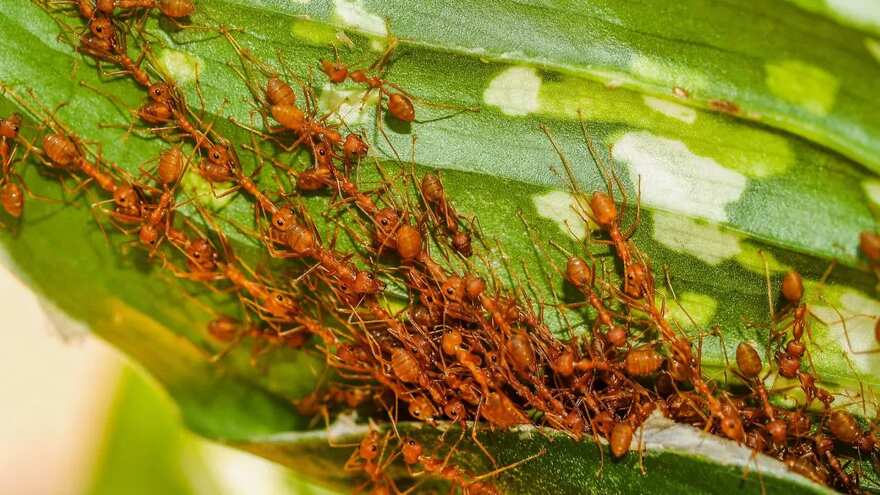Eating insects, known as "entomophagy," is an ancient practice that has been around for centuries. In India, entomophagy has become more popular in the last few years, especially in the states of Odisha and Uttar Pradesh.
This article will talk about all the different parts of entomophagy in India, including its history, the health benefits of eating insects, and how long it can keep going.
Entomophagy in India
Entomophagy, or the practice of eating insects, is a traditional and sustainable source of protein that is practiced in many parts of the world, including India. In India, it is particularly popular in regions like Mayurbhanj in Odisha and some parts of Uttar Pradesh.
While escamole (insect caviar) in Mexico and hormigaculona (female leafcutter ants) in Colombia are enjoyed as significant sources of fat and protein, fried palm weevil larvae (known as akokono) in Ghana and nswaa (insect dish) in Uganda are considered delicacies. In Southeast Asia, especially in Thailand, Vietnam, South Korea, and Japan, fried crickets, silk worms, cockroaches, and locusts are common street foods.
In addition to being a source of nutrition, entomophagy is also seen as a sustainable and environmentally friendly source of protein. Insects are a better and more efficient way to get protein than traditional livestock because they need less land, water, and food to grow.
Exploring the History of Entomophagy in India
The practice of entomophagy in India dates back to ancient times, as evidenced by historical records from the Vedic period. Because it is a cheap and sustainable source of protein, the poorer people of India have more recently practiced entomophagy.
Despite its long history and cultural significance, entomophagy is not as widely practiced in India as it is in other parts of the world. However, there has been a recent push to promote entomophagy as a sustainable and nutritious source of protein, and it is becoming increasingly popular in India and other parts of the world.
Odisha Kai Chutney: A Unique Culinary Experience
One of the most popular dishes is Odisha Kai Chutney, which is a spicy chutney made with roasted red ants. This dish is popular in the area of Odisha, and it is often served with other meals.
Essentially, Odisha Kai Chutney is a spicy chutney made by roasting red ants over a fire and then grinding them into a paste with spices and herbs. The dish is made by frying the red weaver ants in oil until they are crispy and then adding spices and herbs.

Gordon Ramsay's Take on Kai Chutney
Famed chef Gordon Ramsay recently visited India to explore the cuisine and take part in a cooking show. During his visit, he tasted the traditional Odisha Kai Chutney and was impressed by its unique flavor and texture. He praised the dish and said that it was unlike anything he had ever tasted before. He also praised the sustainability of insects as a source of protein and said that it was something that more people should be aware of.
Entomophagy in Mayurbhanj: A Regional Specialty
The Mayurbhanj region of India is known for its unique cuisine, which includes a variety of insect dishes, one of which is Mayurbhanj Kai Chutney. Plans are in the works to register its popular Kai (red ant) chutney as a Geographical Indicator (GI), joining other regional specialties such as Kashmiri saffron, Bengali gobindobhog rice, and Darjeeling tea.
How the Ants Are Collected
The hunter must collect the weaver ants from their nest colonies before they can be processed. Tree leaves are used to build these nests, which are then secured with silk from the larvae. These nests can withstand high winds and persistent precipitation without succumbing to the elements. Ants and their eggs are abundant when the season is right, and both can be enjoyed with a dash of salt and a lot of heat.

Health benefits of eating insects
Natives of the area revere Kai chutney not only for its spicy flavor but also for its medicinal properties, which have been used to treat everything from coughs and colds to jaundice and vision problems. Protein, vitamin B-12, minerals like iron, zinc, magnesium, and sodium, and as many as 18 amino acids can be found in abundance in these red ants.
In addition to being a sustainable source of protein, there are also a number of health benefits to eating insects. Insects are a great source of protein, vitamins, minerals, and other important nutrients. They are also low in fat and cholesterol and are a great alternative to other traditional sources of protein, such as beef and pork
Sustainability of eating insects
Several entomophagy advocates and food scientists have suggested that this practice could solve the world's hunger problems.
The Aayush Ministry will need to establish safeguard measures and guidelines to standardize protocols for hygiene and sanitization before they can be produced on a large scale. Regulating chutney production, it is hoped, will help remove the stigma associated with tribal cuisine and encourage a more positive public perception of it.
If you’re looking for a sustainable and nutritious source of protein, then entomophagy is definitely something to explore. So, find out how eating insects can help you and learn more about the world of entomophagy in India.


